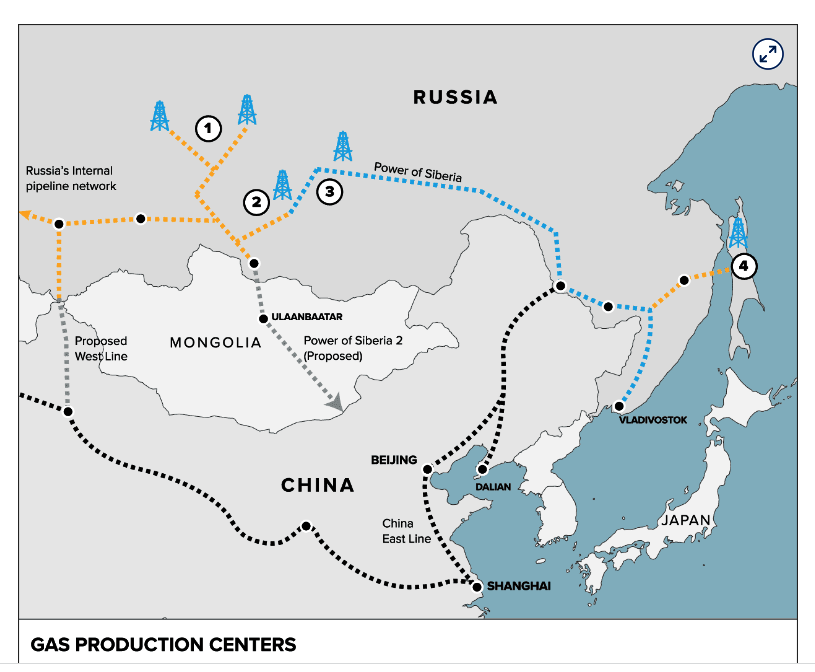nCa Report
With two milestones achieved recently, the Russian giant Gazprom is ready to pump more natural gas to China.
According to the reliable sources, this will not have any adverse effect on the present and future supplies of natural gas from Central Asia to China.
In fact, China will keep looking for ways to acquire more gas from Central Asia.
The Power of Siberia is the pipeline system that connects the Russian fields with the consumers in China. It has two branches – 1 and 2. Of these, Power of Siberia 1 is in operation and Power of Siberia 2 is under-construction.
The total throughput capacity of the Power of Siberia pipeline system will be 61 bcm (billion cubic meters). From this capacity, Russia will supply 23 bcm to its own people along the route of the pipeline and 38 bcm will be available for China.
Just recently, Gazprom announced that it has brought on-stream the Kovyktinskoye gas and condensate field and the section of the Power of Siberia gas trunkline between the Kovyktinskoye and Chayandinskoye fields.
Kovyktinskoye is the largest gas reserve in Eastern Siberia with 1.8 trillion cubic meters of design recoverable gas reserves and 65.7 million tons of gas condensate reserves.
Earlier this month, it was announced that an important engineering breakthrough had been reached by successfully placing three parallel pipes in the under-river tunnel across the Yangtze River, a key control project of the pipeline, which was completed in 28 months of challenging construction.
The Power of Siberia will reach its full capacity by 2025. At its peak, it will be providing China with 38 bcm of gas, which is still less than what Central Asia is supplying today.
According to the sources, the purpose of acquiring the Russian gas is to reduce the dependence of China on coal. The restoration of the ecological integrity is among the top priorities of China. There is no sense of competition here, said the sources.
Moreover, there is neat division among the provinces of China for the Russian and Central Asian gas supplies. On the principle of proximity, the provinces that are located closer to the route of the Power of Siberia will receive the gas from that pipeline while the Central Asia pipeline serves the provinces that fall along its route.
The consumption of gas in China has lately shown a healthy upward trend. Despite the fact that the ‘Zero Covid’ policy of China has slowed down the economic activity, there was 9% increase in the consumption of gas from September to October this year. The total gas consumption in China for the ten months of this year was nearly 300 bcm, a decrease of only 1.1% over the figures for the same period of last year. The consumption is on the rebound now with the softening of the official stance on the ‘Zero Covid’ restrictions.
The sources said that China will work together with Central Asia for the construction of the Line D of the Central Asia – China pipeline system (Turkmenistan-China pipeline). This is because the present set of pipelines is working at its full capacity and there is still the demand for more.
One possible strategy for China could be to reduce the import of LNG because the recent geopolitical turmoil has shown that LNG supplies are prone to speculation and volatility. On the other hand, the pipeline gas is reliable, dependable, and predictable. /// nCa, 23 December 2022

